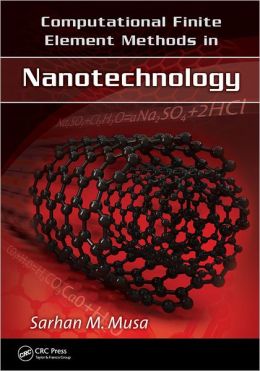 [内容简介]
[内容简介]
Computational Finite Element Methods in Nanotechnology demonstrates the capabilities of finite element methods in nanotechnology for a range of fields. Bringing together contributions from researchers around the world, it covers key concepts as well as cutting-edge research and applications to inspire new developments and future interdisciplinary research. In particular, it emphasizes the importance of finite element methods (FEMs) for computational tools in the development of efficient nanoscale systems.
The book explores a variety of topics, including:
- A novel FE-based thermo-electrical-mechanical-coupled model to study mechanical stress, temperature, and electric fields in nano- and microelectronics
- The integration of distributed element, lumped element, and system-level methods for the design, modeling, and simulation of nano- and micro-electromechanical systems (N/MEMS)
- Challenges in the simulation of nanorobotic systems and macro-dimensions
- The simulation of structures and processes such as dislocations, growth of epitaxial films, and precipitation
- Modeling of self-positioning nanostructures, nanocomposites, and carbon nanotubes and their composites
- Progress in using FEM to analyze the electric field formed in needleless electrospinning
- How molecular dynamic (MD) simulations can be integrated into the FEM
- Applications of finite element analysis in nanomaterials and systems used in medicine, dentistry, biotechnology, and other areas
The book includes numerous examples and case studies, as well as recent applications of microscale and nanoscale modeling systems with FEMs using COMSOL Multiphysics® and MATLAB®. A one-stop reference for professionals, researchers, and students, this is also an accessible introduction to computational FEMs in nanotechnology for those new to the field.
[目录]
Overview of Computational Methods in Nanotechnology
Orion Ciftja and Sarhan M. Musa
Finite Element Method for Nanotechnology Applications in Nano-/Microelectronics
Jing Zhang
Modeling, Design, and Simulation of N/MEMS by Integrating Finite Element, Lumped Element, and System Level Analyses
Jason Vaughn Clark, Prabhakar Marepalli, and Richa Bansal
Nanorobotic Applications of Finite Element Method
S. Sadeghzadeh, M.H. Korayem, V. Rahneshin, A. Homayooni, and M. Moradi
Simulations of Dislocations and Coherent Nanostructures
Anandh Subramaniam and Arun Kumar
Continuum and Atomic-Scale Finite Element Modeling of Multilayer Self-Positioning Nanostructures
Y. Nishidate and G.P. Nikishkov
Application of Finite Element Method for the Design of Nanocomposites
Ufana Riaz and S.M. Ashraf
Finite Element Modeling of Carbon Nanotubes and Their Composites
Mahmoud Nadim Nahas
Finite Element–Aided Electric Field Analysis of Needleless Electrospinning
Haitao Niu, Xungai Wang, and Tong Lin
Molecular Dynamic Finite Element Method (MDFEM)
Lutz Nasdala, Andreas Kempe, and Raimund Rolfes
Application of Biomaterials and Finite Element Analysis (FEA) in Nanomedicine and Nanodentistry
Andy H. Choi, Jukka P. Matinlinna, Richard C. Conway, and Besim Ben-Nissan
Application of Finite Element Analysis for Nanobiomedical Study
Viroj Wiwanitkit
Finite Element Method for Micro and Nano-Systems for Biotechnology
Jean Berthier
Design of the Nanoinjection Detectors Using Finite Element Modeling
Omer G. Memis and Hooman Mohseni
Finite Element Method (FEM) for Nanotechnology Application in Engineering: Integrated Use of Macro-, Micro-, and Nano-Systems
Radostina Petrova, P. Genova, and M. Tzoneva
Modeling at the Nano Level: Application to Physical Processes
Serge Lefeuvre and Olga Gomonova
Appendix A: Material and Physical Constants
Appendix B: Symbols and Formulas
Index

 新书报道
新书报道